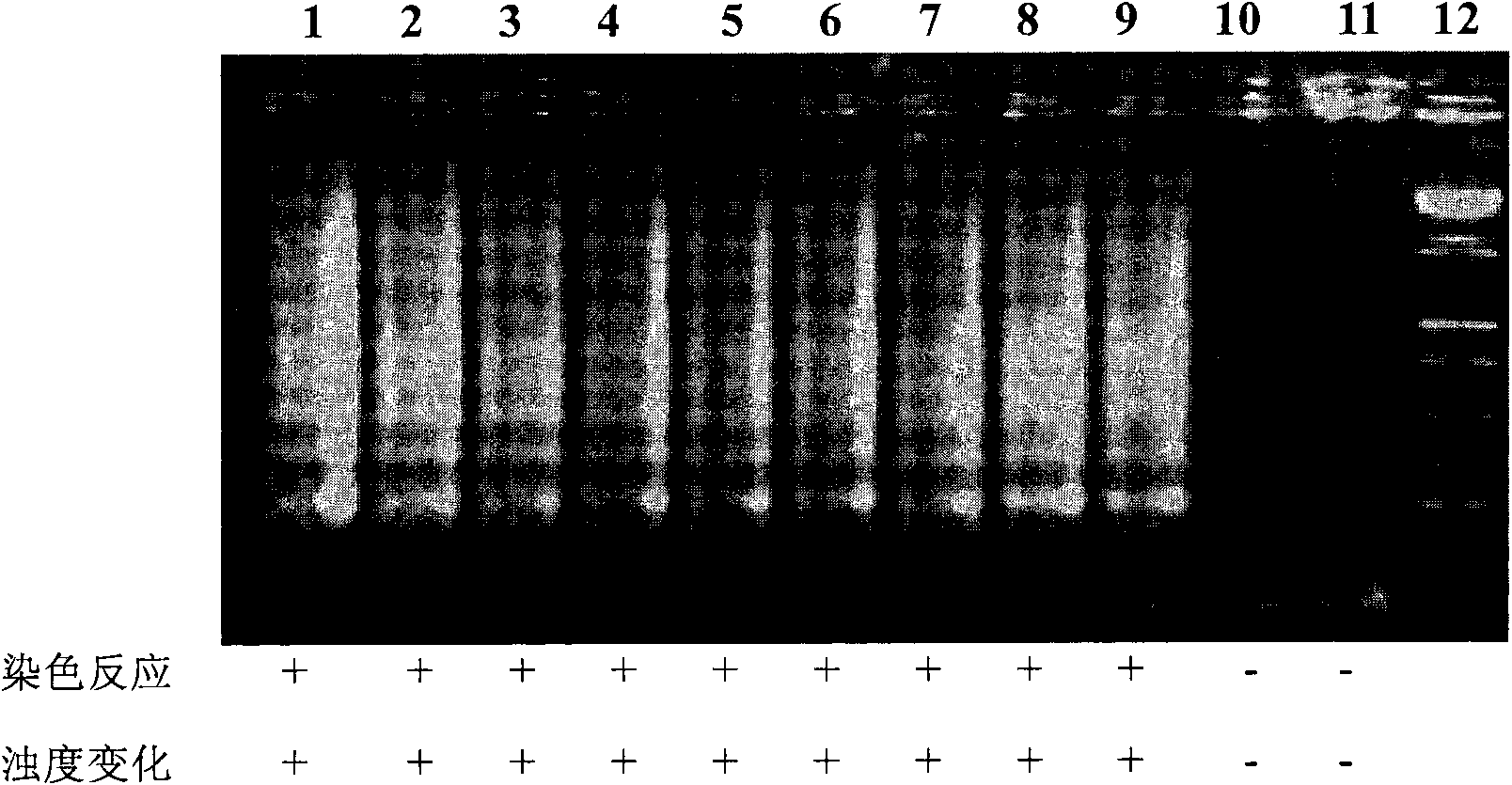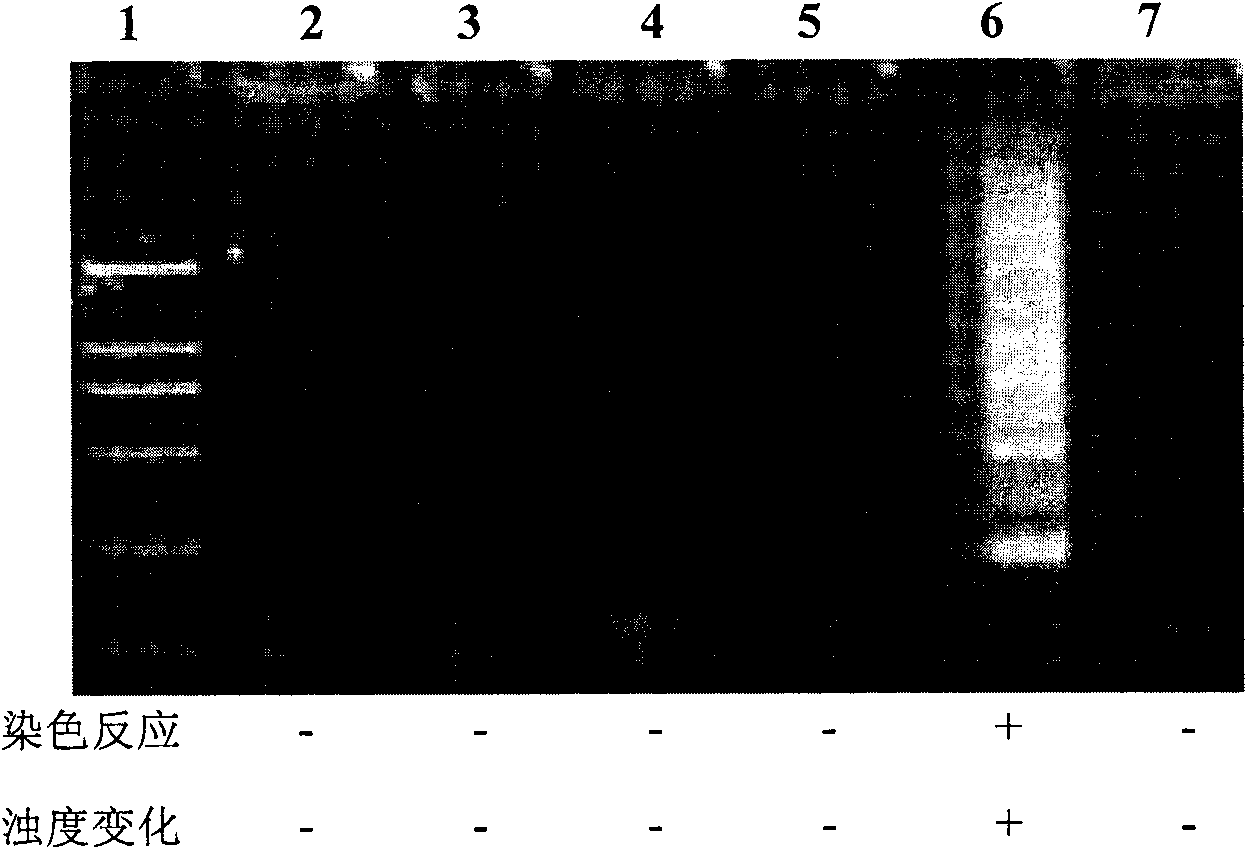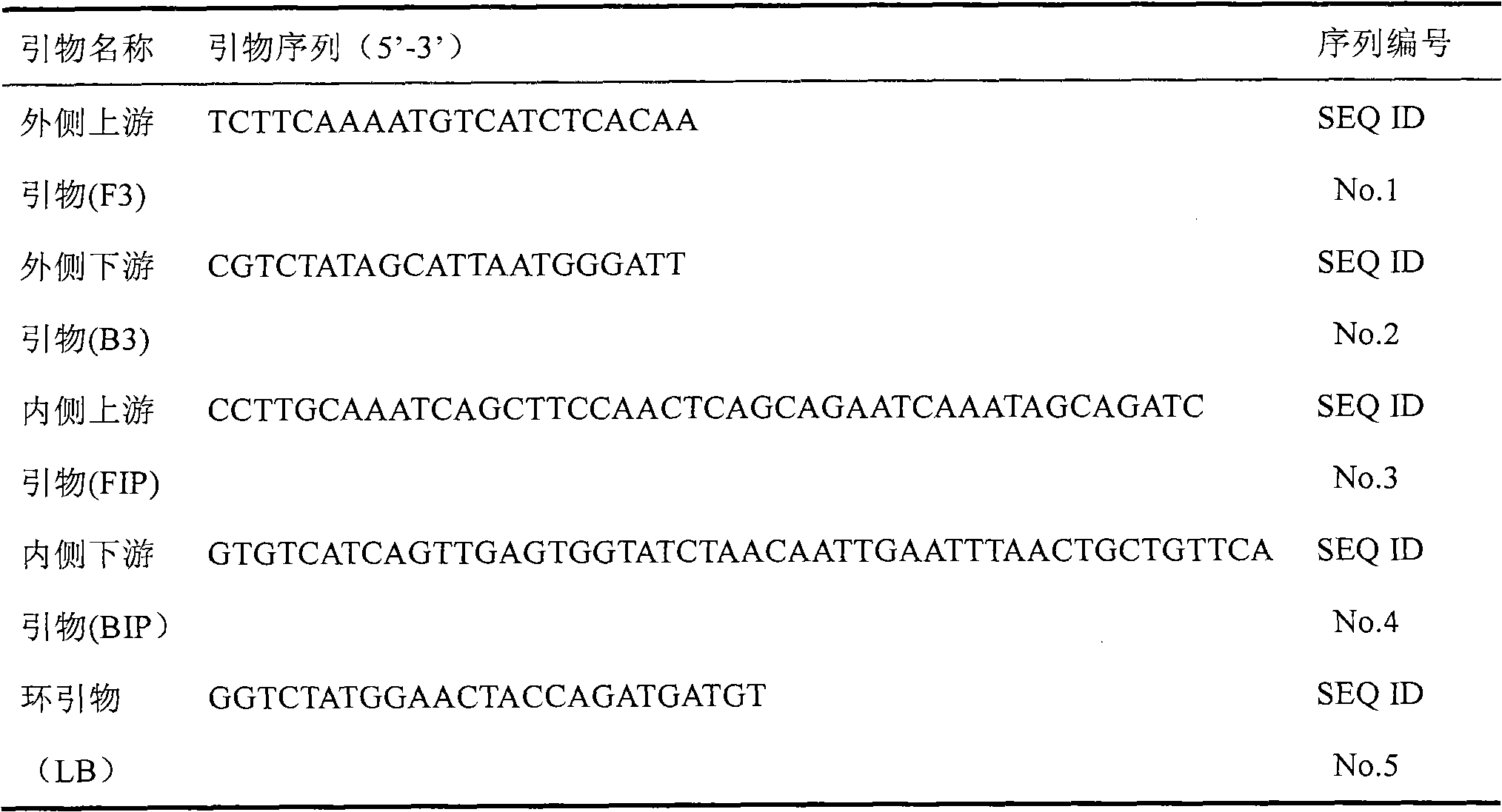Kit and oligonucleotide sequences for detecting rotavirus A
A nucleotide sequence, rotavirus technology, applied in the biological field, can solve problems such as unseen rotavirus detection, and achieve the effects of improving detection sensitivity, low cost, and shortening reaction time
- Summary
- Abstract
- Description
- Claims
- Application Information
AI Technical Summary
Problems solved by technology
Method used
Image
Examples
Embodiment 1
[0042] Example 1: Design of RT-LAMP primers
[0043] Select the highly conserved sequence of the NSP3 gene (GenBank accession No.X81436) of group A rotaviruses, and use Primer Explorer V4.0 online software (http: / / primerexplorer.jp / elamp4.0.0 / index.html) to design group A rotavirus The specific RT-LAMP primers of virus, the primers are shown in Table 1. The Tm value of the primers is between 59°C and 62°C; the terminal free energy (G) is less than -4cal / mol, which can ensure sufficient stability of the primers; the GC content is about 40%; there is no complementarity at the 3' end of the primers sequence, which can effectively prevent the formation of secondary structures inside the primer. The rotavirus-specific loop primer (Loop B) designed in the present invention helps to improve the detection sensitivity and shorten the reaction time. 5 primers recognize 7 different sites of the rotavirus NSP3 gene, which fully guarantees the specificity of the amplification reaction. ...
Embodiment 2
[0043] Select the highly conserved sequence of the NSP3 gene (GenBank accession No.X81436) of group A rotaviruses, and use Primer Explorer V4.0 online software (http: / / primerexplorer.jp / elamp4.0.0 / index.html) to design group A rotavirus The specific RT-LAMP primers of virus, the primers are shown in Table 1. The Tm value of the primers is between 59°C and 62°C; the terminal free energy (G) is less than -4cal / mol, which can ensure sufficient stability of the primers; the GC content is about 40%; there is no complementarity at the 3' end of the primers sequence, which can effectively prevent the formation of secondary structures inside the primer. The rotavirus-specific loop primer (Loop B) designed in the present invention helps to improve the detection sensitivity and shorten the reaction time. 5 primers recognize 7 different sites of the rotavirus NSP3 gene, which fully guarantees the specificity of the amplification reaction. Primers were entrusted to Dalian Bao Biological...
Embodiment 3
[0052] Embodiment 3: detect the composition of the kit of A group rotavirus
[0053] 1. The composition of the kit (stored at -20°C)
[0054] (1) TRIZOL lysate: purchased from Invitrogen, product number: 15596-026;
[0055] (2) DEPC water: purchased from Shanghai Sangong, item number: D1005;
[0056] (3) 2×RT-LAMP reaction solution: its components are: 2×ThermoPol buffer, 1.6M betaine, 3.6mMdNTPs, 8mM MgSO 4 , 0.4 μM outer upstream primer (F3), 0.4 μM outer downstream primer (B3), 3.2 μM inner upstream primer (FIP), 3.2 μM inner downstream primer (BIP), 1.6 μM loop primer (LB); wherein the outer upstream primer ( F3) is the nucleotide sequence shown in the sequence listing SEQ ID No.1, the outer downstream primer (B3) is the nucleotide sequence shown in the sequence listing SEQ ID No.2, and the inner upstream primer (FIP) is the sequence listing SEQ The nucleotide sequence shown in ID No.3, the inner downstream primer (BIP) is the nucleotide sequence shown in the sequence t...
PUM
 Login to View More
Login to View More Abstract
Description
Claims
Application Information
 Login to View More
Login to View More - R&D
- Intellectual Property
- Life Sciences
- Materials
- Tech Scout
- Unparalleled Data Quality
- Higher Quality Content
- 60% Fewer Hallucinations
Browse by: Latest US Patents, China's latest patents, Technical Efficacy Thesaurus, Application Domain, Technology Topic, Popular Technical Reports.
© 2025 PatSnap. All rights reserved.Legal|Privacy policy|Modern Slavery Act Transparency Statement|Sitemap|About US| Contact US: help@patsnap.com



